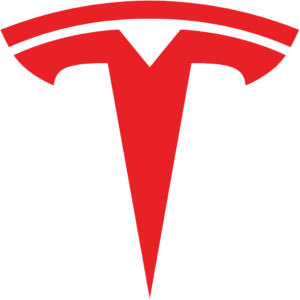Volkswagen is Gefickt!
2020 has been a disastrous year for VW and they are a long way from out of the woods. It starts with VW’s culture, the arrogance of German vehicle manufacturers, and of course VW’s top management. As with the other two German automakers, Daimler and BMW, the German car making trio have relied for far too long on their internal combustion engine and powertrain engineering and production technology and a steadfast, indeed stubborn, failure to understand exponential technological change and the superiority (from every viewpoint) of battery powered electric vehicles. BMW, Mercedes, and Audi were all shocked when Tesla’s Model S arrived in Europe and the Model S’s sales exceeded those of their luxury 7 Series, S-class, and A7 vehicles combined!
The fact that all three German car manufacturers realize how far behind Tesla they are with regard to having today or in the near future a competitive software and hardware-based operating system platform for their vehicles (electric and ICE-powered) led them to desperate measures last March. Very high level representatives from the Boards of Directors of Daimler and Volkswagen met secretly to see if they could work together to create such a platform. Unbeknownst to them, BMW was secretly sending out similar feelers to both companies. It was all very top secret, until it wasn’t. While of questionable legality, I can’t imagine a software project more doomed to failure than one involving the arrogance and egos from these three German companies trying to work together. All three companies are in deep trouble on this issue, but none more than VW as we will see.
Tony Seba’s book Clean Disruption of Energy and Transportation that came out in 2014 accurately forecasted the current disruptive changes in solar power, power generation, battery storage and the transportation industry. A later version specific to the automobile industry, Rethinking Transportation 2020 – 2030 co-written with James Arbib, was published in 2017. Over the past seven years both Tony Seba and his RethinkX co-founder James Arbib have issued a score of YouTube videos of their presentations to organizations around the world. Ramez Naam, associated with Peter Diamandis and Ray Kurzweils’ Singularity University has picked up on the same themes in the past three years, again with many free videos available on YouTube. Any auto company in the world could have had either of the three speakers with roughly the same message come in-house to address their Board and top executive suite team. If any did, it is clear no one in the traditional auto industry paid attention, or bothered to read any of Seba and Arbib’s books, available for a pittance on Amazon. The current situation in the German car industry is a classic example of RCI Syndrome – the recto-cranial insertion pandemic within the German auto industry’s senior management.
Turning our attention more specifically to VW, it was already reeling from its “Dieselgate” fiasco and the criminal prosecutions and financial penalties resulting from that top management-approved emissions skullduggery. Then came the COVID-19 crisis. In addition, VW has always been hamstrung by its own culture – hierarchical, bureaucratic, cautious and plodding, slow to innovate, and intensely political. I have written about their slow-paced decision making in an earlier blog.
During Ferdinand Piech’s reign as the head of the Volkswagen Group (1993 to 2002), he was an absolute autocratic micromanaging terror as a CEO. Imperious, arrogant, and domineering are adjectives most commonly used to describe him. Not even the smallest decision was made without his approval. To cross him was to die. Nonetheless he significantly grew VW in his era and now it now includes the following twelve brands: VW, Porsche, Audi, Lamborghini, Bentley, Bugatti, Seat, Skoda, VW Commercial Vehicles, MAN and SCANIA trucks, and Ducati motorcycles. But with this growth came the cost of greatly increasing organizational complexity and the cultural stifling of ideas and innovation.
There are two other significant problems that delay and influence decision making at VW. VW is primarily a family owned business with the Porsche and Piech families controlling 50.7% of the Supervisory Board’s voting rights. Their joint corporate management responsibility is considerably impaired by the two families’ bitter rivalry. To further complicate things, VW is partially owned by the German government with the government of Lower Saxony owning 20% of the Supervisory Board’s voting rights and having veto power over any management decisions, thus injecting a great deal of German national and regional politics into VW’s governance. Interestingly, Qatar Holding LLC, an arm of Qatar’s government, controls another 17.0 % of the Supervisory Board’s voting rights. Finally, seven seats out of 20 on VW’s Supervisory Board belong to labor unions that typically resist change and management’s efforts to make the organization more innovative, productive, nimble, and effective.
European businesses don’t have the executive or employee turnover that US companies consider routine. A downside of this is that the three German auto companies – fierce rivals amongst themselves — do not welcome outsiders, particularly those from their rivals! We have seen this cultural rejection play out lately at VW with the downgrading of CEO Herbert Deiss’s responsibilities, and the downgrading (and likely move out soon) of Christian Senger, the former head since March 2019 of VW’s software unit Car Software.Org, who was previously responsible for developing the software behind BMW’s I3 and I8. An article in InsideEVs.com states that: “…. Senger would be one of the most brilliant executives at Volkswagen.” Instead of learning from mistakes and moving on with the best talent you have, VW’s management finds a convenient person to pin the blame on and demote or fire. How could VW sacrifice such a much needed talent as Senger?
Part of the reason VW’s board brought Diess and Senger in from BMW was to change VW’s culture and speed up progress toward designing and producing competitive battery powered electric vehicles. Diess enjoyed the majority support of the Porsche and Piech families and moved fast (for German time, not Musk time!). However, in the process he alienated a lot of people with his cost cutting ideas and aggressiveness – the politicians and labor unions especially.
To VW’s credit, they are now firmly committed to electric vehicles, abandoning their pursuit of hydrogen fuel cell-powered cars only this recent April first. BMW foolishly continues to experiment with hydrogen fuel cells for cars and to harbor illusions that they can be competitive offering three different propulsion units (gas, diesel, and electric) in most of their models and produce all three powertrain varieties on one production line for the same body/chassis unit.
VW has committed to spend 33 Billion Euros on electric vehicles through 2024, of which 11 Billion Euros will be exclusively for the VW brand. VW has bold intentions and so far shows every sign of being serious about their announced intentions – unlike GM’s, Honda’s, and Toyota’s slow walk approaches. The scale of VW’s electric vehicle intent and program so far dwarfs those of BMW and Mercedes Benz.
VW and all the German car manufacturers finally admit to what they now recognize as a major strategic error by becoming overdependent on their supplier base – particularly their Tier One suppliers. The automakers’ strategy was to outsource as much design responsibility as possible, and to pick and choose components from competing suppliers. Unfortunately, they each did this with no overall open integrated vehicle operating system design for those components to plug into quickly and seamlessly. They didn’t realize that you don’t just plug unstandardized custom-made proprietary software bits together like you install a brake part, fuel injector, or shock absorber.
In April 2020, Christian Senger described the extent of VW’s current electronics/software problem: “Currently up to 70 control units operating with software from 200 different suppliers must be networked in vehicles [just of] the Volkswagen brand. We devote a large part of our energy [and time and cost!] to technical integration and rely very much on the development of third parties……Today our share {of self-developed software} is less than 10 percent……we want to achieve a share in software development or more than 60% by 2025.” Why not 100% by 2025?
A recent CleanTechnica article by Alex Voigt contains a great quote from Peter Mertens, Audi’s former Head of R&D and a former Audi Board member – speaking of the German auto industry: “……we all slept to a certain extent, and that’s not only the [German] auto industry, but in particular the suppliers.”
It was not until January of 2020 that VW created an independent unit Car Software.Org to develop VW’s electric vehicle operating system, starting with about 3,000 software and hardware “experts” and an initial budget of 7 Billion Euros.
The software problem at VW really hit the fan (item one of two) when the new Golf 8’s software for Germany’s required “eCall/Emergency Assist” system via the Internet would not work properly. On May 17th of this year through about June 6th, VW froze delivery of the new highly awaited model until the fix for production was accomplished. The first 15,000 Golf 8s that got out before VW discovered the problem will now have to be returned by their customers to a VW dealer to obtain the necessary software patch. Legally, VW can leave no vehicle uncorrected. How could that software fiasco happen? Why did it take five weeks to develop a fix for it? Why not five days or five hours? This problem occurred in spite of VW using Microsoft as a partner on this project.
That software problem, important legally but relatively minor technically, was a prelude to VW’s major software problem with the new VW ID.3 electric vehicle heavily promoted by CEO Diess. Both the new ID.3 and ID.4 are very appealing new VW electric cars. However, the software design for them was unworkable, much to VW management’s embarrassment. VW’s decision making proceeded incrementally – first continuing to build thousands of ID.3 and filling parking lots with them – without their software package.
Initially the ID.3 was to be released around June first of this year. Faced with this serious flaw, VW finally decided to release the vehicles to the public in September of this year with an incomplete software package, promising that the software fix would be delivered in an over-the-air update by the end of December 2020. IMO, you would have to be a rabid optimist to count on that!
The problem is that unless VW has 100,000 ID.3s in the hands of customers and being driven on the roads by the end of the year, they will face fines of billions of Euros by the EU. Some say the ID.3 is nothing more than a rushed “compliance car” to avoid the new EU CO2 emissions penalties. I think both the ID.3 and ID.4 will be big hits in Europe. I don’t expect that the ID.3 will ever be sold in the US. The ID.4 for US markets is to be built in VW’s Chattanooga, TN plant.
When both these software problems occurred, one after the other on Diess’s and Senger’s watch, Diess’s enemies pounced and Diess paid the consequence by being removed as the head of VW’s flagship VW brand and replaced by a 27 year VW executive and political adversary Ralf Brandstatter. Diess, an extremely capable and articulate leader, still remains CEO of the entire VW organization, but who knows for how long before the organization totally rejects him, or vice-versa.
So now, under the overall management of Markus Duesmann, currently Audi’s CEO, Dirk Hilgenberg, also from BMW, has been appointed to take Senger’s place as head of VW’s Car Software.Org software unit. The overall responsibility for VW’s Car Software.Org organization was given to Duesmann. To add more confusion and upheaval to this matter, VW is also moving its entire Car Software.Org organization from Wolfsburg in the North (120 miles west of Berlin) to Ingolstadt some 250 miles south in Bavaria, where Audi is headquartered.
Such turmoil! According to the VW brand’s own Board of Management member Thomas Ulbrich’s statement VW is already ten years behind Tesla. Consider the cost, more wasted time, and disruption of moving that entire software organization! And many Germans are not fond of moving! By the end of the year VW states its Car Software.Org organization will consist of 5,000 people, with plans to increase its size to 10,000 people by 2025! VW’s management obviously is unaware of Fred Brooks’ The Mythical Man-Month, published in 1975. You don’t solve a software design and coding challenge by throwing hundreds or thousands of programmers at it.
VW now states that they are committed to developing their own vehicle software. This was justifiable strategically at one point, but the fact that they have realized this so late in the game and are going about it the way they are demonstrates a fundamental lack of understanding about the software development process. One, you can’t buy the integrated vehicle software/hardware solution they need from anyone. Two, as noted above you can’t just throw huge numbers of people or cubic money at the problem. And three, you can’t do it with yesterday’s software people – generally those over 40 years old especially. That is, you either can’t do the job at all, or you will never get it done in a quality manner on time!
Faced with VW’s software challenge, in appointing Dirk Hilgenberg Duesmann selected a manufacturing engineer close to 60 years old to head up this critical function! As a manufacturing and plant floor automation person, Dirk’s experience is likely to be with SCADA plant floor and robotic control systems – – about as far removed from what VW now needs for its electric vehicles as one could imagine. And Hilgenberg’s “IT” experience was primarily from 2004 to 2011 – at least two software/hardware/internet generations ago! Unless Hilgenberg has some magical magnetic management ability, VW’s software is likely doomed to failure, he will eventually be replaced, and VW will start again, even further behind.
You might think that VW would scour the world to hire the very best software development gurus away from the likes of Apple, Amazon’s AWS, Microsoft, Google, or perhaps even Zoox or Aurora. I am talking young 24 to 40 year-old people who have been in the thick of software development, AI, vision systems, neural nets, and internet-based applications for years. People like Andrej Karpathy, Director of AI and Autopilot vision at Tesla, Danny Shapiro, Senior Director of Automotive Nvidia, or George Hotz, CEO of Comma.AI (personality notwithstanding!).
One could imagine such a talent saying to VW’s top management: “I will hire 30 to 50 super software and hardware engineers (not 5,000 or 10,000, and perhaps none from VW!) and we will design and produce the initial software platform and operating system for Level 3 driving in 18 months. Moreover, I expect a more than adequate budget and ample incentives for this team. I will select a physical location for our effort.”
Image courtesy of Pixabay
Your feedback in the form of comments or suggestions are welcome in the comment window. Thank you for following my blogs on this site and for participating in my blogging community.




